Gerard Calvo Bartra
Experimental Assessment of A Framework for In-body RF-backscattering Localization
Jun 24, 2025Abstract:Localization of in-body devices is beneficial for Gastrointestinal (GI) diagnosis and targeted treatment. Traditional methods such as imaging and endoscopy are invasive and limited in resolution, highlighting the need for innovative alternatives. This study presents an experimental framework for Radio Frequency (RF)-backscatter-based in-body localization, inspired by the ReMix approach, and evaluates its performance in real-world conditions. The experimental setup includes an in-body backscatter device and various off-body antenna configurations to investigate harmonic generation and reception in air, chicken and pork tissues. The results indicate that optimal backscatter device positioning, antenna selection, and gain settings significantly impact performance, with denser biological tissues leading to greater attenuation. The study also highlights challenges such as external interference and plastic enclosures affecting propagation. The findings emphasize the importance of interference mitigation and refined propagation models to enhance performance.
Tailoring Graph Neural Network-based Flow-guided Localization to Individual Bloodstreams and Activities
Aug 02, 2024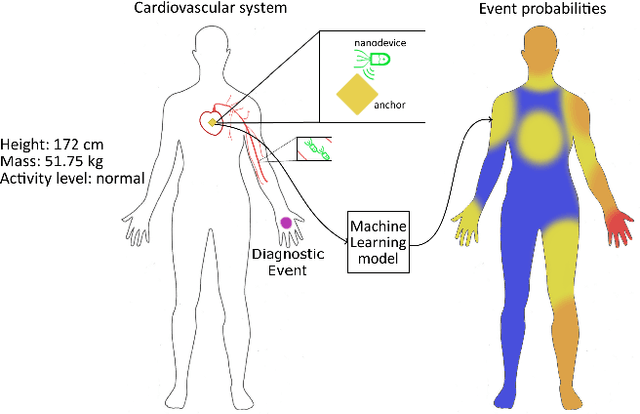
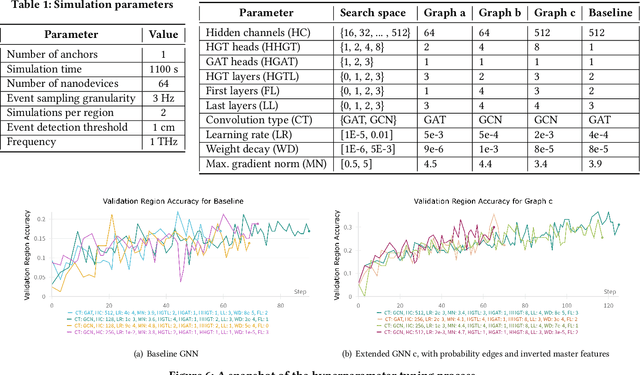
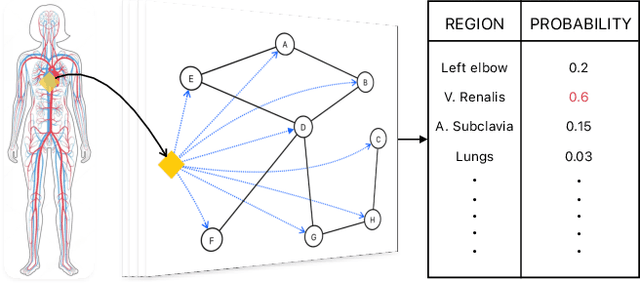

Abstract:Flow-guided localization using in-body nanodevices in the bloodstream is expected to be beneficial for early disease detection, continuous monitoring of biological conditions, and targeted treatment. The nanodevices face size and power constraints that produce erroneous raw data for localization purposes. On-body anchors receive this data, and use it to derive the locations of diagnostic events of interest. Different Machine Learning (ML) approaches have been recently proposed for this task, yet they are currently restricted to a reference bloodstream of a resting patient. As such, they are unable to deal with the physical diversity of patients' bloodstreams and cannot provide continuous monitoring due to changes in individual patient's activities. Toward addressing these issues for the current State-of-the-Art (SotA) flow-guided localization approach based on Graph Neural Networks (GNNs), we propose a pipeline for GNN adaptation based on individual physiological indicators including height, weight, and heart rate. Our results indicate that the proposed adaptions are beneficial in reconciling the individual differences between bloodstreams and activities.
Graph Neural Network-enabled Terahertz-based Flow-guided Nanoscale Localization
Jul 09, 2023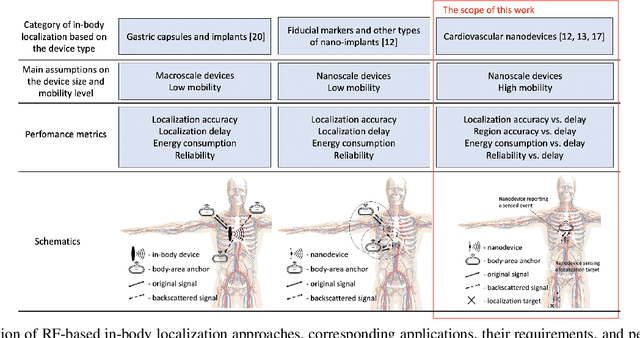
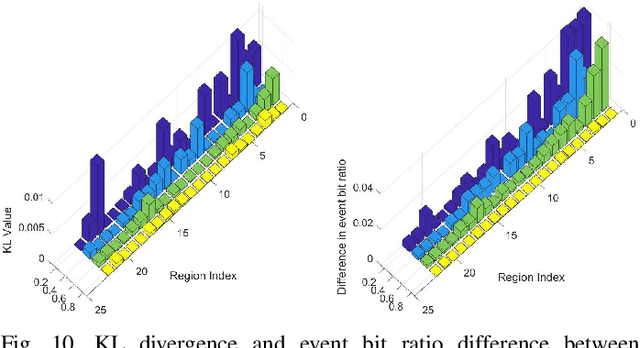
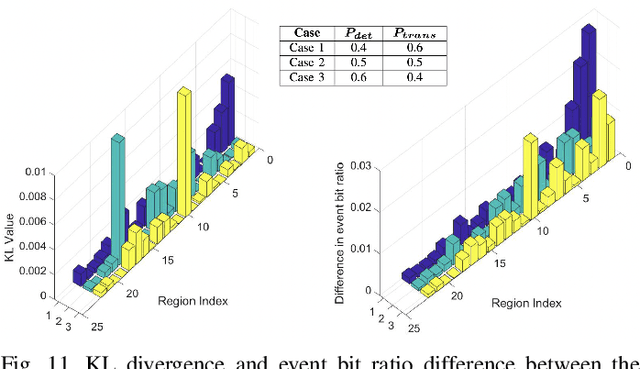
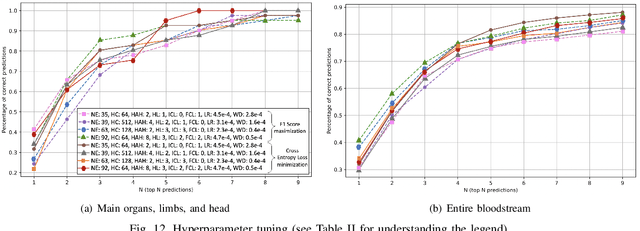
Abstract:Scientific advancements in nanotechnology and advanced materials are paving the way toward nanoscale devices for in-body precision medicine; comprising integrated sensing, computing, communication, data and energy storage capabilities. In the human cardiovascular system, such devices are envisioned to be passively flowing and continuously sensing for detecting events of diagnostic interest. The diagnostic value of detecting such events can be enhanced by assigning to them their physical locations (e.g., body region), which is the main proposition of flow-guided localization. Current flow-guided localization approaches suffer from low localization accuracy and they are by-design unable to localize events within the entire cardiovascular system. Toward addressing this issue, we propose the utilization of Graph Neural Networks (GNNs) for this purpose, and demonstrate localization accuracy and coverage enhancements of our proposal over the existing State of the Art (SotA) approaches. Based on our evaluation, we provide several design guidelines for GNN-enabled flow-guided localization.
Insights from the Design Space Exploration of Flow-Guided Nanoscale Localization
May 29, 2023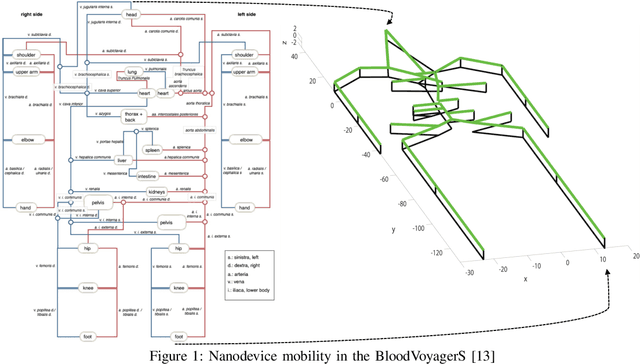
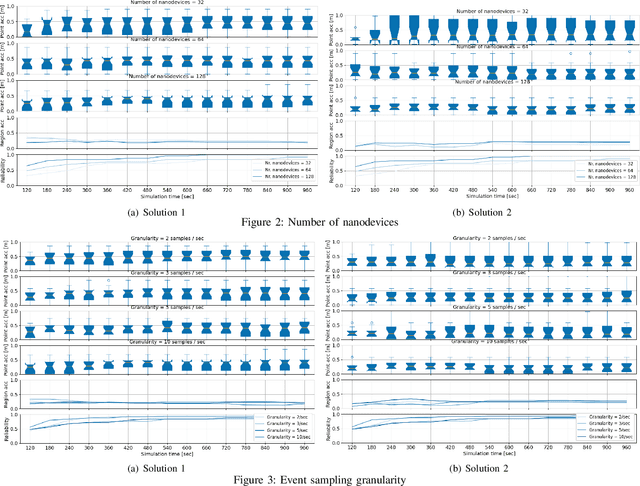
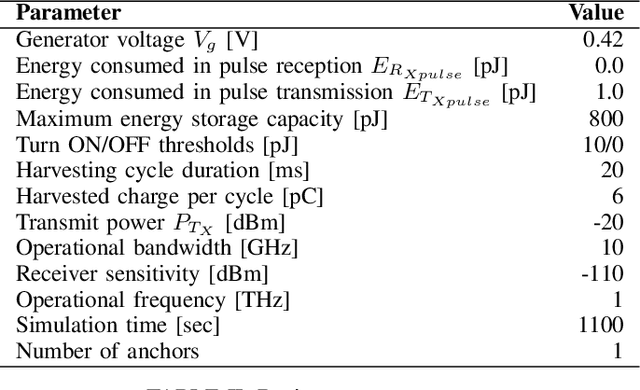

Abstract:Nanodevices with Terahertz (THz)-based wireless communication capabilities are providing a primer for flow-guided localization within the human bloodstreams. Such localization is allowing for assigning the locations of sensed events with the events themselves, providing benefits in precision medicine along the lines of early and precise diagnostics, and reduced costs and invasiveness. Flow-guided localization is still in a rudimentary phase, with only a handful of works targeting the problem. Nonetheless, the performance assessments of the proposed solutions are already carried out in a non-standardized way, usually along a single performance metric, and ignoring various aspects that are relevant at such a scale (e.g., nanodevices' limited energy) and for such a challenging environment (e.g., extreme attenuation of in-body THz propagation). As such, these assessments feature low levels of realism and cannot be compared in an objective way. Toward addressing this issue, we account for the environmental and scale-related peculiarities of the scenario and assess the performance of two state-of-the-art flow-guided localization approaches along a set of heterogeneous performance metrics such as the accuracy and reliability of localization.
 Add to Chrome
Add to Chrome Add to Firefox
Add to Firefox Add to Edge
Add to Edge